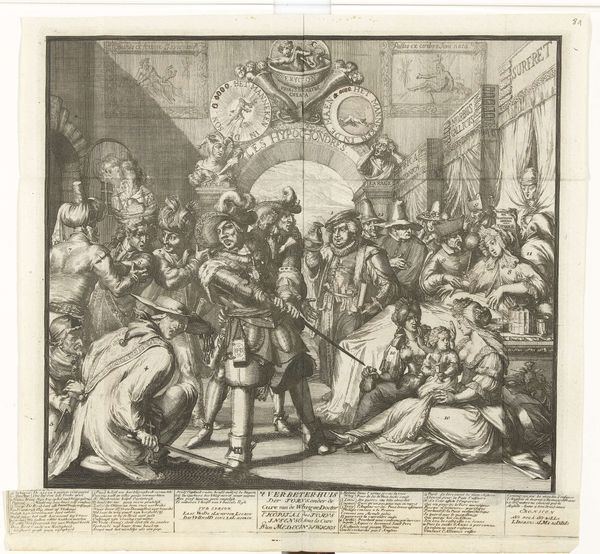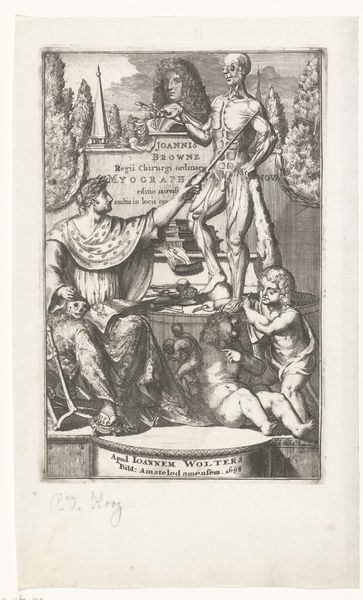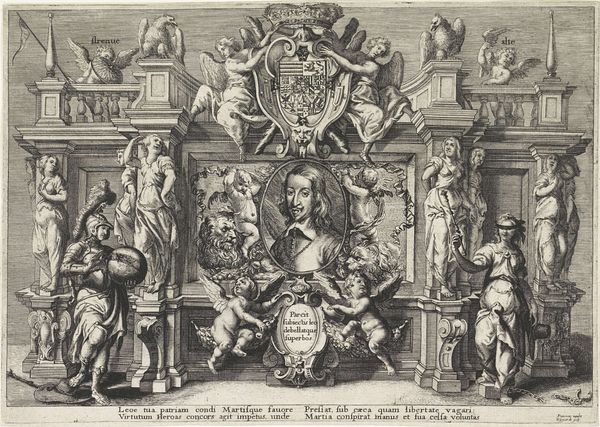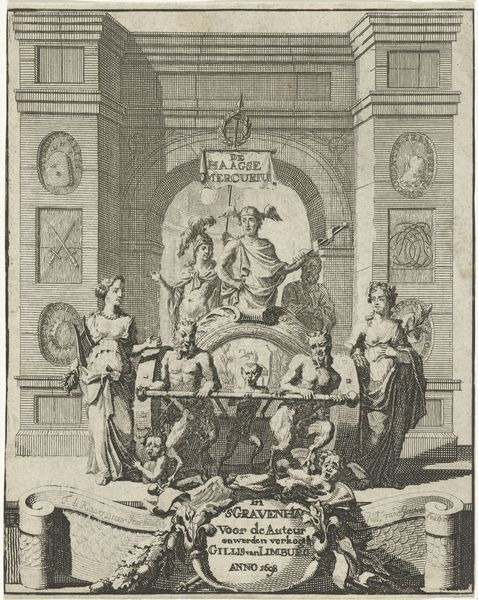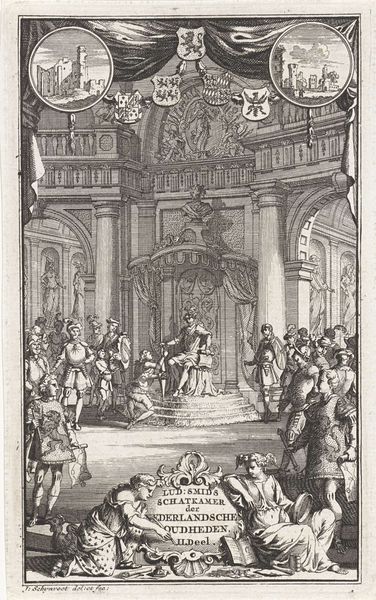
print, engraving
#
baroque
# print
#
landscape
#
park
#
engraving
Dimensions: height 229 mm, width 284 mm
Copyright: Rijks Museum: Open Domain
Curator: What a meticulously crafted print. This is Romeyn de Hooghe's "Titelprent voor prentserie 'Het park van Enghien (Edingen)'" dating back to 1685, currently held at the Rijksmuseum. The image shows the park of Enghien with figures of nobility and staff, made with the engraving technique. Editor: My immediate impression is one of lavish abundance and theatricality, the chiaroscuro creating a sense of depth and drama typical of the baroque. Look at how the figures emerge from the darkness, seemingly frozen in mid-gesture. What can we tell from the material here? Curator: Considering the context of printmaking at the time, the choice of engraving is quite significant. This intaglio technique allowed for fine detail and the ability to produce multiple copies efficiently, it was an industry in itself! This work could have been consumed throughout Europe by nobles with a need for ostentation. Editor: Exactly, look at the landscape. Beyond the formal garden is the suggestion of wild space, representing humanity civilizing and taming nature, almost like an allegory of controlling resources through work. And these aren’t generalized symbols – this work shows a very specific location. Curator: The formal elements strongly suggest a sense of hierarchical order with strong verticals in its organization. Notice the elaborate central cartouche framing the title of the series. De Hooghe emphasizes structure, presenting the park, "Het Perc van Anguien," as a carefully constructed representation of status. This park is, after all, designed for an audience. Editor: It really speaks to the complex relationships between power, nature, and the visual vocabulary of the time. This print not only served to advertise the grandeur of Enghien but also showcases the economic systems supporting this opulence: copper mines, engraving workshops, distributors… and all available at a glance! Curator: Analyzing this piece reminds me how art offers us entry into an intentional visual framework. Its impact lies in the considered organization of these forms, communicating the patron's values across space and time. Editor: Precisely. Looking at De Hooghe’s work in this way brings to life how its meaning wasn’t just made—but also delivered and, subsequently, consumed by different layers of the late 17th-century public.
Comments
No comments
Be the first to comment and join the conversation on the ultimate creative platform.






